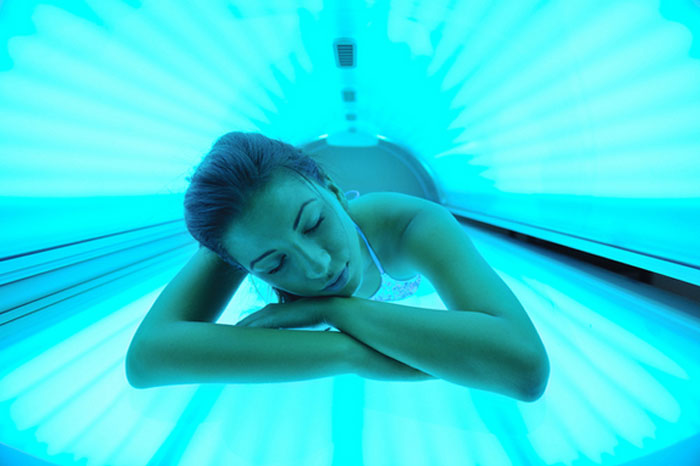30% of White Teens Girls Use Indoor Tanning

Indoor tanning is common among white teenage girls, especially older teens, according to a new report from researchers at the Centers for Disease Control and Prevention.
Nearly 30 percent of white high school girls in the United States said they had used indoor tanning devices — such as a sunlamp, sunbed or tanning booth — within the last year, the report said. The rate increased with age, with 18 percent of 15-year-old white high school girls reporting tanning in the last year, but 40 percent of 17-year-olds, and 44 percent of those ages 18 and older saying the same. Close to 17 percent said they went tanning at least 10 times in the last year.
Among white women ages 18 to 34, about 25 percent said they had engaged in indoor tanning in the last year, and 15 percent said they went tanning at least 10 times in the last year. In contrast to high school girls, the rate of indoor tanning among women decreased with age, with just 17 percent of women ages 30 to 34 reporting any indoor tanning use in the last year, the report said.
Indoor tanning was most common in the Midwest and the South, with 30 to 34 percent of high school girls, and 25 to 28 percent of women ages 18 to 34, in these regions reporting indoor tanning.
"Indoor tanning is widespread among non-Hispanic white female high school students and adults ages 18 to 34 years," the researchers write in the Aug. 19 issue of the journal JAMA Internal Medicine. "This widespread use is of great concern given the elevated risk of skin cancer among younger users and frequent users," the researchers said.
Indoor tanning before the age of 35 increases the risk of melanoma, the deadliest type of skin cancer, by 59 to 75 percent, the researchers said, and indoor tanning use before the age of 25 can double the risk of other skin cancers.
"Reducing exposure to UV radiation from indoor tanning is an important strategy for reducing the burden of skin cancer," the researchers said.
Sign up for the Live Science daily newsletter now
Get the world’s most fascinating discoveries delivered straight to your inbox.
The U.S. Preventive Services Task Force, a government-appointed panel of experts, recommends that fair-skinned children, teens and young adults should be told at a doctor's appointment about how to reduce their risk of skin cancer.
A proposal by the Food and Drug Administration to add warning labels to indoor tanning beds that highlight the risks of using the beds may also help reduce indoor tanning rates, the researchers said.
The new study analyzed information from 2010 and 2011 surveys of U.S. women and high school students. The researchers noted the study relied on self-reports of participants' indoor tanning use, which may not be entirely accurate. A study published in 2012 also found that about a third of white women reported using tanning beds in the last year.
Follow Rachael Rettner @RachaelRettner. Follow LiveScience @livescience, Facebook & Google+. Original article on LiveScience.

Rachael is a Live Science contributor, and was a former channel editor and senior writer for Live Science between 2010 and 2022. She has a master's degree in journalism from New York University's Science, Health and Environmental Reporting Program. She also holds a B.S. in molecular biology and an M.S. in biology from the University of California, San Diego. Her work has appeared in Scienceline, The Washington Post and Scientific American.









